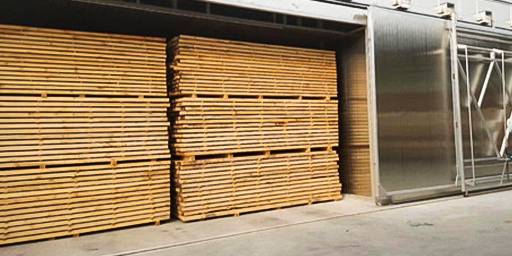Precautions for drying wood
When we dry wood, sometimes the drying effect of the wood is not good, or the dried timber cannot be used. Have you paid attention to these two factors?
External factor:
Temperature is the main factor affecting the drying speed of wood. When the temperature rises, the water pressure in the wood increases, and the viscosity of liquid-free water decreases, which is conducive to promoting the flow and diffusion of water in the wood. If the lysogenic capacity of the copper wire’s drying medium has been increased, the moisture evaporation speed of the wood would be accelerated. However, it is worth noting that if the temperature is too high, it will cause cracking and deformation of the wood, reducing the mechanical strength. Therefore, the temperature should be adequately controlled.
The relative humidity is an important factor affecting the drying rate of wood. When the temperature and air velocity are the same, the higher the relative humidity, the greater the partial pressure of water vapor in the medium, the less likely the moisture on the wood surface will evaporate into the medium, and the slower the drying speed. When the relative humidity is low, the surface moisture will evaporate quickly, and the surface moisture content decreases. As a result, the moisture diffusion increases, and the drying speed is faster. However, if the relative humidity is too low, it would cause drying defects such as opening and honeycomb showed up.
Internal factors:
Firstly, wood species and structural characteristics are the main factors. Different species of wood have different structures. The size and number of its pits and the size of the pores on the pit film are very different, so the difficulties for water moving along the above path is different, that is, the wood species is the main internal factor affecting the drying speed. If the diameter of the wood pore on the pit film is small, the drying rate is significantly lower than that of the diffuse-porous type of trees. When the tree density becomes larger, the water flow resistance in the capillary increases, thus the water dispersion path in the cell wall would become longer, which would result in difficulties for drying.
The second factor is the moisture content of the wood. With the decrease of water content, the transverse diffusion coefficient of the water decreases, while the diffusion coefficient of water vapor in the cell cavity increases. As the proportion of the water vapor diffuses in the cell cavity is not large, the lower the water content, the longer the water dispersion path, so it is difficult to dry if the water content is low.
The third factor is the heartwood and sapwood. If the content in the tree cell is full and the cell pets are closed up, this type of heartwood is more difficult to dry than sapwood.
The fourth factor is the thickness of the wood. The conventional wood drying process can be approximately regarded as a one-dimensional heat and mass transfer process along the thickness direction of the wood. With the increase of thickness, the heat and mass transfer distance becomes longer, the resistance increases, and the drying speed decreases significantly.
The fifth factor is the direction of wood texture. Wood ray is conducive to water conduction, and the water conduction along the radial direction of wood is faster. Therefore, the drying speed of flat-swan timber is usually faster than that of quarter-swan timber.



